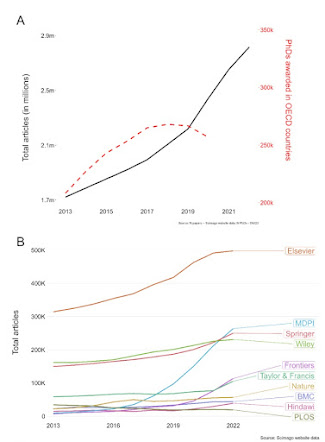Given the present interest, let's talk about what kind of properties one wants in a superconductor, as some people on social media seem ready to jump straight on the "what does superconductivity mean for bitcoin?" train.
First, the preliminaries.
Superconductivity is a state of matter in which the conduction electrons act collectively in an interesting way. In the superconductors we know about, electrons
pair up and can be described by a single collective quantum state (with a well-defined phase - the quantum state can be written as a complex quantity that has an amplitude and a phase angle, as in \(A \exp{i\phi}\), where \(\phi\) is the phase). A consequence of this is that there is an "
energy gap" - it costs a certain amount of energy to create individual unpaired electrons. It's this energy gap that allows dc current to flow without electrical resistance in a superconductor. There is a length scale, the
coherence length, over which the superconducting state tends to vary, like at the boundary of a material. There is also a length scale, the
penetration depth, over which magnetic field can penetrate into a superconductor.
Magnetic field is expelled from the bulk of a superconductor because the material spontaneously develops surface currents such that the field from those currents cancels out the external field in the bulk of the material. Depending on the ratio of the coherence length and the penetration depth, a superconductor can be
Type I (expels all magnetic field until the field \(H\) exceeds some critical value \(H_{c}\), at which point superconductivity dies) or
Type II (allows magnetic field above a critical field \(H_{c1}\) to penetrate in the form of vortices, with a non-superconducting core and surrounded by screening currents, until superconductivity is eventually killed above some upper critical field \(H_{c2}\)). Motion of vortices actually leads to energy losses, so it is desirable for applications involving AC currents especially to have the vortices be
pinned in place somehow in the material, often by disorder. It is this pinning that leads to superconducting levitation in fixed orientations relative to a magnet, even with the SC hanging below the magnet. Superconductivity tends to die either by the pairs falling apart (common in Type I superconductors as temperature is increased until thermal energy exceeds the attractive pairing interaction) or by the loss of global phase coherence (a crude analogy: the dance partners are still paired up, but each pair is dancing to their own tune).
Superconductors have a critical temperature above which global superconductivity is lost. They also have critical field scales, as mentioned above. Clearly, for many applications, it would be greatly desirable for a superconductor to have both a high critical temperature (obviously) and high critical fields. Similarly, superconductors have a critical current density - some combination of the local field (from the current) exceeding the critical field and current-driven phase slips can lead to loss of superconductivity. It would be great to have a high critical current density. The relationship between critical temperature, critical field, and critical current density is not always simple, though they tend to correlate, because if SC is very robust all three quantities will tend to be larger.
It would also be wonderful if a new superconducting family of materials was
ductile. The higher temperature superconductors (
cuprates,
pnictides,
nickelates) are all
ceramics, meaning that they are brittle and not readily formed into wires. It's taken 36 years or so for people to get good at making
wires and ribbons that incorporate the cuprate superconductors, typically by encasing them in powder form inside Cu or Ag tubes, then squeezing appropriately and annealing.
Lastly, and perhaps not well appreciated, from a practical perspective, it'd be nice if superconductors were air stable. That is, it's annoying to work with materials that react poorly to oxygen, humidity in the air, O2 or water in the presence of UV light from the sun, etc. Having a material that is chemically very stable with a clearly known and set stoichiometry would be great. Along with this, it would be nice if the material was easily made, at scale, without having to resort to crazy conditions (super high temperatures or pressures; weird rare or hazardous constituents).
How useful any candidate superconductor will be and on what timescale is set by the combination of these properties. A room temperature superconductor that turns into goo in the presence of damp air would not be nearly as useful as one that is chemically stable sitting on a bench.
For all the people who seem to be jumping to the conclusion that room temperature superconductivity will suddenly lead to breakthroughs in quantum information processing, that is far from clear. Lots of processes that screw up superconducting qubits happen more at higher temperatures, even if superconductivity is robust. I'm not aware of anyone peddling qubits based on copper oxide superconductors right now, even though the transition temperature is 10 times higher than that of Nb.
In short: usefulness does not flow instantly from materials discovery, even if the material parameters all seem good. Patience is hard to come by yet essential in trying to adapt new materials to applications.






